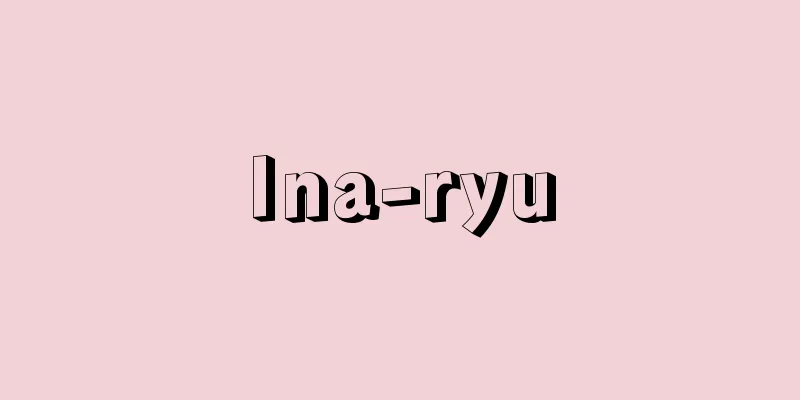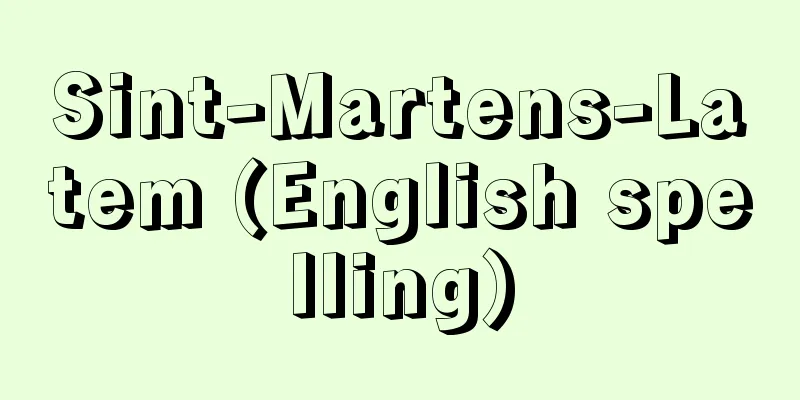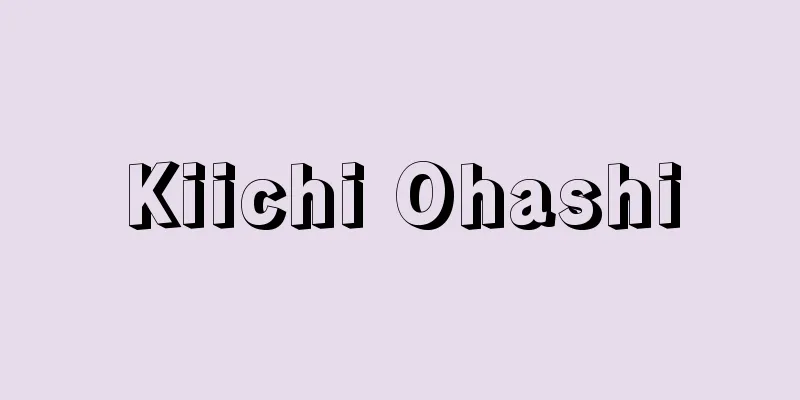Ina-ryu

|
〘Noun〙 One of the methods of collecting tribute in the Edo period. It is a method of collecting a fixed amount of tax regardless of the harvest, and was started by Ina Bizennokami. It is said to be in contrast to the Hikosaka style, which collects more in good years and less in bad years. *Tsuji Rokurozaemon's letter (before the 18th century): "The local laws of the household are called the Ina style and the Hikosaka style, and both families have them." Source: The Selected Edition of the Japanese Language Dictionary About the Selected Edition of the Japanese Language Dictionary Information |
|
〘名〙 江戸時代の貢租徴収の方法の一つ。収穫の豊凶にかかわりなく、常に一定の租額を徴収する方法で、伊奈備前守が始めたもの。豊年のときは多く、凶年のときは少なく徴収する彦坂流に対していう。※辻六郎左衛門上書(18C前か)「御家の地方の法、伊奈流・彦坂流と申候て両家御座候」
出典 精選版 日本国語大辞典精選版 日本国語大辞典について 情報 |
Recommend
Indian mouse deer
An animal of the Mammalia class, Order Artiodacty...
Isard, W.
…It is a new spatial science that links and syste...
San Juan de los Baños (English spelling)
… [Architecture] Between the 3rd and 5th centurie...
Advisory committee
A council is a deliberative body that administrat...
Chemical gypsum (gypsum)
...Snowflake gypsum (alabaster) is a type of gyps...
remex
…three types of wing feathers can be distinguishe...
Ichikawa Koisaburo
…The name of the head of the Nishikawa School of ...
Availability theory
The amount of funds that an individual borrower ca...
Eukomys comosa - Eukomys comosa
...About 10 species grow wild in South Africa and...
Tree (information science) - Ki
...Calculations and other processing of mathemati...
Crab paste - Crab paste
…In cephalopods such as squid and octopus, the li...
Daimyoji Temple
Located on the central peak of Shugang in Yangzhou...
Mabuse
…Flemish painter. Known as Mabuse after the name ...
Law - Law
〘Noun〙[一] (Hafu:)① Laws and rules. National law an...
Toki clan rebellion
In 1390, Toki Yasuyuki was annihilated by Shogun A...









